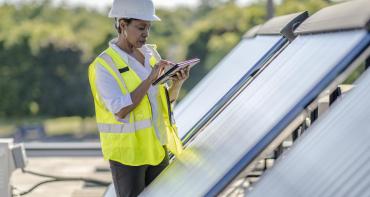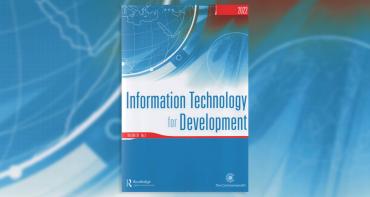Blog by Dr Deepa Pullanikkatil, Commonwealth National Climate Finance Adviser for Fiji and Keshav Dash, Commonwealth National Climate Finance Adviser for Tuvalu

As countries are actively looking for ways to reduce their greenhouse gas (GHG) emissions, they should be looking at using more electric vehicles (EVs).
E-mobility offers an effective and climate-friendly alternative to internal combustion engines and as a result, global sales of EVs have grown exponentially. Yet many countries, especially small island developing states, like those in the Pacific, face specific barriers to adopting the technology.
Challenges to E-mobility adoption
Transport, a rapidly growing sector, contributes one-fifth of global CO2 emissions. There’s no doubt that decarbonising the transport sector would help to create a cleaner, healthier, climate-resilient future. However, shifting to electric vehicles presents a number of unique challenges for Pacific Island Countries (PICs).
For example, there is a higher upfront cost of electric vehicles compared to conventional ones, coupled with the added cost of batteries and chargers. In addition, small island countries often have inadequate charging infrastructure for widescale adoption.
There are secondary structural barriers, too. Most PICs have high proportions of diesel-generated electricity in the grid mix. Increased demand for EV charging might actually increase diesel consumption in the electricity sector. The knock-on effect would mean increased carbon emissions from electricity production and a reduction in the generation of renewable energy. This may not fit well with emission reduction targets set by governments.
Small island countries also face barriers due to their narrow economic base and limited institutional capacity to, for example, provide training and implement e-mobility projects.
Yet, despite their minuscule share of global emissions and unique challenges, PICs recognise their global responsibility to achieve net zero and have developed ambitious Nationally Determined Contributions (NDCs) and Low Emission Development Strategies (LEDS) to decarbonise their economies, including the transport sector.
E-mobility is on the move in the Pacific
Some countries, including Vanuatu, Fiji, Nauru, Tonga, have included EVs and decarbonisation of the transport sector in their NDCs. In addition, Fiji, Nauru, Vanuatu, Tonga, and Tuvalu have undertaken feasibility studies and are piloting increased EVs. Fiji has 20 EVs and seven charging stations and Nauru will bring in two EVs in Dec 2023 through a UNDP-funded project. Not to be left behind, Tuvalu has a pilot e-bike programme.
Solomon Islands is starting a pilot to use ten electric buses in its capital city, Honiara, with the aim of increasing the fleet over the next five years, with funding from the GEF 8 Star allocation towards e-mobility. The project was designed with assistance from the Commonwealth Climate Finance Access Hub (CCFAH).
Attracting and incentivising private sector investment in the Pacific will help with e-mobility growth. Investments in EVs will also need grid expansion, and this is an opportunity to expand renewable energy use, thereby decarbonising the electricity sector.
Many Pacific islands have abundant renewable energy resources, such as solar, wind, and hydroelectric power. Utilising these resources to generate clean energy for EV charging can significantly reduce emissions and create a sustainable energy ecosystem.
Governments in the Pacific can play a pivotal role in promoting e-mobility by offering incentives such as tax breaks, subsidies, and reduced registration fees for EVs. The Commonwealth Climate Finance Access Hub can support this by helping countries revise their policies to provide a better enabling environment for low-carbon technologies, including e-mobility.
In addition, the rise of EVs and grid expansion with renewable energy could deliver green jobs for young people – important in a region where over half the population is below the age of 23.
There is no denying that electric vehicles will become mainstream in the medium to long-term future, and PICs can get multiple benefits by moving swiftly to address the barriers to widespread adoption and tapping into opportunities to take EVs to the roads, seas, and skies.
Media contact
-
Charmaine Wright Head of Media Relations, Media and Public Affairs, Commonwealth Secretariat



